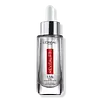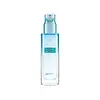What's inside
What's inside
 Key Ingredients
Key Ingredients

 Benefits
Benefits

 Concerns
Concerns

No concerns
 Ingredients Side-by-side
Ingredients Side-by-side

Water
Skin ConditioningGlycerin
HumectantDimethicone
EmollientCetearyl Ethylhexanoate
EmollientAlcohol Denat.
AntimicrobialHydroxyethylpiperazine Ethane Sulfonic Acid
BufferingSilanetriol
Bisabolol
MaskingDimethiconol
EmollientAloe Barbadensis Leaf Juice
Skin ConditioningSodium Hyaluronate
HumectantSodium Hydroxide
BufferingSilica Dimethyl Silylate
EmollientHyaluronic Acid
HumectantAscorbyl Glucoside
AntioxidantAmmonium Polyacryloyldimethyl Taurate
Emulsion StabilisingDisodium EDTA
Isopropyl Myristate
EmollientCaprylyl Glycol
EmollientCitric Acid
BufferingXanthan Gum
EmulsifyingT-Butyl Alcohol
PerfumingBetula Alba Juice
AstringentEthylhexyl Palmitate
EmollientButylene Glycol
HumectantHexylene Glycol
EmulsifyingTocopherol
AntioxidantPotassium Sorbate
PreservativeSorbic Acid
PreservativeSodium Benzoate
MaskingPhenoxyethanol
PreservativeCI 42090
Cosmetic ColorantLinalool
PerfumingFarnesol
PerfumingLimonene
PerfumingCitral
PerfumingParfum
MaskingWater, Glycerin, Dimethicone, Cetearyl Ethylhexanoate, Alcohol Denat., Hydroxyethylpiperazine Ethane Sulfonic Acid, Silanetriol, Bisabolol, Dimethiconol, Aloe Barbadensis Leaf Juice, Sodium Hyaluronate, Sodium Hydroxide, Silica Dimethyl Silylate, Hyaluronic Acid, Ascorbyl Glucoside, Ammonium Polyacryloyldimethyl Taurate, Disodium EDTA, Isopropyl Myristate, Caprylyl Glycol, Citric Acid, Xanthan Gum, T-Butyl Alcohol, Betula Alba Juice, Ethylhexyl Palmitate, Butylene Glycol, Hexylene Glycol, Tocopherol, Potassium Sorbate, Sorbic Acid, Sodium Benzoate, Phenoxyethanol, CI 42090, Linalool, Farnesol, Limonene, Citral, Parfum
 Reviews
Reviews

Ingredients Explained
These ingredients are found in both products.
Ingredients higher up in an ingredient list are typically present in a larger amount.
Ascorbyl Glucoside is a stable form of Vitamin C. It is created by combining glucose from starch.
When applied to skin, Ascorbyl Glucoside turns into Ascorbic Acid.
Ascorbyl Glucoside is an antioxidant. Antioxidants help fight free-radicals, or molecules that may damage skin cells.
It can help to reduce redness, improve skin texture, reduce the effects of aging, reduce the visibility of dark spots, and brighten skin.
Read more about other types of Vitamin C:
Learn more about Ascorbyl GlucosideDisodium EDTA plays a role in making products more stable by aiding other preservatives.
It is a chelating agent, meaning it neutralizes metal ions that may be found in a product.
Disodium EDTA is a salt of edetic acid and is found to be safe in cosmetic ingredients.
Learn more about Disodium EDTAGlycerin is already naturally found in your skin. It helps moisturize and protect your skin.
A study from 2016 found glycerin to be more effective as a humectant than AHAs and hyaluronic acid.
As a humectant, it helps the skin stay hydrated by pulling moisture to your skin. The low molecular weight of glycerin allows it to pull moisture into the deeper layers of your skin.
Hydrated skin improves your skin barrier; Your skin barrier helps protect against irritants and bacteria.
Glycerin has also been found to have antimicrobial and antiviral properties. Due to these properties, glycerin is often used in wound and burn treatments.
In cosmetics, glycerin is usually derived from plants such as soybean or palm. However, it can also be sourced from animals, such as tallow or animal fat.
This ingredient is organic, colorless, odorless, and non-toxic.
Glycerin is the name for this ingredient in American English. British English uses Glycerol/Glycerine.
Learn more about GlycerinWe don't have a description for Hydroxyethylpiperazine Ethane Sulfonic Acid yet.
Phenoxyethanol is a preservative that has germicide, antimicrobial, and aromatic properties. Studies show that phenoxyethanol can prevent microbial growth. By itself, it has a scent that is similar to that of a rose.
It's often used in formulations along with Caprylyl Glycol to preserve the shelf life of products.
Sodium Hyaluronate is hyaluronic acid's salt form. It is commonly derived from the sodium salt of hyaluronic acid.
Like hyaluronic acid, it is great at holding water and acts as a humectant. This makes it a great skin hydrating ingredient.
Sodium Hyaluronate is naturally occurring in our bodies and is mostly found in eye fluid and joints.
These are some other common types of Hyaluronic Acid:
Learn more about Sodium HyaluronateWater. It's the most common cosmetic ingredient of all. You'll usually see it at the top of ingredient lists, meaning that it makes up the largest part of the product.
So why is it so popular? Water most often acts as a solvent - this means that it helps dissolve other ingredients into the formulation.
You'll also recognize water as that liquid we all need to stay alive. If you see this, drink a glass of water. Stay hydrated!
Learn more about Water